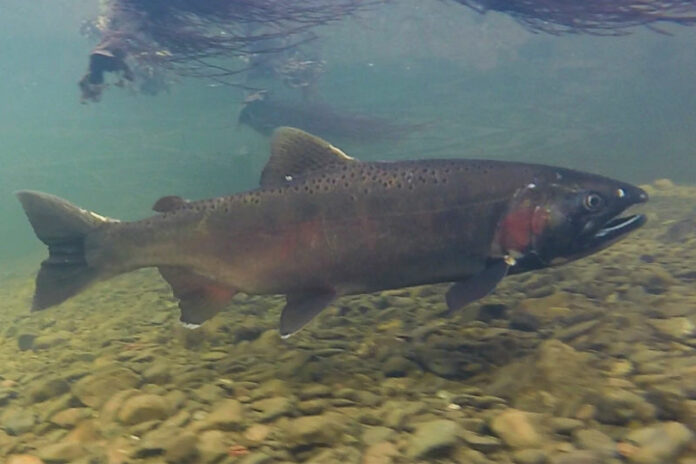In response to statewide fish extinction crisis, which indicates 74 percent of California’s native salmon, steelhead and trout species are likely to be extinct in the next century, the fish and watershed conservation non-profit organization California Trout (CalTrout) today released its list of the top five dams prime for removal in the golden state. The dams identified in the report were carefully selected: dams that provide the least benefit for people and caused the greatest hazards for imperiled native fish rose to the top.
“With the majority of California’s native salmonids at significant risk of extinction in the next 100 years, it’s imperative that we look for low-hanging fruit opportunities to improve conditions for fish, especially when we can do so without compromising public safety or water security for people,” said Curtis Knight, executive director of CalTrout. “The top five dams identified in the report provide only marginal value for people, while their removal would provide significant ecosystem and economic benefits.”
CalTrout’s “Top Five California DAMS OUT Report” is the follow up to the organization’s 2017 “State of the Salmonids II: Fish in Hot Water” report, which was completed in partnership with UC Davis. That report detailed the status of 32 types of salmon, steelhead, and trout that are native to California and offered data about the threat of near-term extinction facing each of these fish populations. It also identified opportunities for stabilizing and even recovering many of the state’s native fish species. Restoring access to upstream habitat through efforts like dam removal is a priority action in the drive to prevent a mass extinction of California’s native fish.
More than 1,400 dams block California rivers, creeks and streams. Many of these structures block access to salmon and steelhead spawning and rearing habitat. Studies have shown access to upstream habitat is critical for promoting self-sustaining populations of migratory fish. While a great number of the state’s dams provide critical water supply, flood control and hydroelectric power, many others have outlived their functional lifespan and could be removed without impacting human health and safety.
CalTrout’s list of top five California DAMS OUT include: Matilija Dam, Ventura River in Ojai, Searsville Dam; Corte Madera Creek/San Francisquito Creek watershed in Redwood City; Rindge Dam, Malibu Creek in Malibu; Klamath Dams (Iron Gate Dam, Copco Dam #1, Copco Dam #2) in Siskiyou County; and Scott Dam, Eel River in Lake Co.
The Potter Valley Project’s Scott Dam, which is located on the Eel River and is used to divert water into the Russian River watershed, is featured on this list. “One of two dams in PG&E’s Potter Valley Project, which provides hydroelectricity, water storage and diversions into the Russian River. Pending FERC relicensing process likely to call for fish passage over dam, which would be cost prohibitive. Species to benefit: Calif. Coast Chinook salmon, So. Ore./No. Calif. Coast coho salmon, No. Calif. summer steelhead, No. Calif. winter steelhead,” says the report.
CalTrout identified these dams as ripe for removal by analyzing information found in several studies to assess the overall benefits that removal would present to native fish, water, and people. Every dam considered for inclusion in the list blocks access to habitat for salmon and steelhead species listed as critical or of high concern in the State of Salmonids II report.
These dams also no longer serve the purpose for which they were built and, in some cases, may now pose a public safety threat. Dams that currently provide flood control or water supply for people were not considered for inclusion in the list, nor were any dams that are part of the State Water Project or federal Central Valley Project due to their vital role in securing water for residents throughout the state.
“CalTrout’s priority is always to find a middle ground that protects the water needs of people while improving conditions for native salmon, steelhead and trout where possible,” continued Knight. “Removing these five dams would be a significant step in the right direction for imperiled native fish without having a significant impact on people. It would also be a step in the right direction for the overall health of our watersheds, which is especially important in this era of climate change.”
You can read the full report at https://caltrout.org/damsout/.
51.5
F
Healdsburg
March 12, 2025








